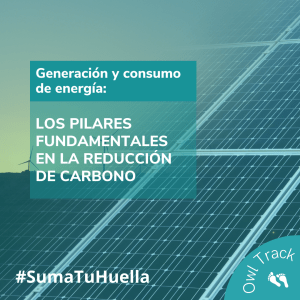Generation and Consumption of Energy: The Fundamental Pillars in Carbon Reduction
Currently, renewable energies are the primary and urgent response to achieve the goals of the Paris Agreement and meet global commitments for climate change mitigation.
Distributed Energy Resources refer to a set of devices and technologies that allow users of the electrical system to generate, store, or manage electrical energy to efficiently meet their needs.
Distributed generation has evolved differently in each country. However, all agree that its development is growing sustainably. Latin America is currently showing signs of growth, making it an opportune time to promote investments and initiatives that drive the development of the sector along with its associated products and services.
As of December 2021, Generación SOLE identified an accumulated installed capacity of 11.9 GW of distributed generation in the region, implemented through more than one million systems, of which 98% corresponds to distributed photovoltaic solar technology. This capacity represents more than a third (38%) of the total installed photovoltaic solar technology in the region.
The regulatory framework for enabling and implementing distributed generation activities varies between markets. Some establish laws, while others use technical regulations, resolutions, decrees, or other levels of regulation. Regarding compensation mechanisms, two-thirds of the markets use the “Net Metering” model, while the remaining third uses “Net Billing.”
According to the International Energy Agency (IEA) outlook, the incorporation of renewable energies over the next 5 years (2021-2026) is expected to reach 305 GW annually, with photovoltaic solar leading with 60% of the total technologies, and distributed generation contributing approximately 40% of the installed photovoltaic capacity.
However, the IEA’s forecast for the incorporation of photovoltaic solar technology over the next 5 years (2021-2026) will need to nearly double to achieve the Paris Agreement goal and limit global warming to well below 2 degrees Celsius, preferably to 1.5 degrees Celsius, compared to pre-industrial levels.

Renewable energies have ceased to be alternatives and have become the main and complementary option to conventional energies.
Argentina has significant potential in renewable energies. The winds of Patagonia, solar radiation measurements in the Northwest, Northeast, and Core (Humid Pampa) regions of Argentina are favorable for biomass development.
According to the Global Energy Monitor report, a U.S.-based nonprofit organization that tracks clean energy development, Latin America has the necessary resources to become a global leader in renewable energy, with projects equivalent to one billion solar panels expected to come online by 2030.
An example of these energies can be seen in Buenos Aires, on the roofs of the 9 de Julio metrobús and at the Retiro Transfer Center, where more than 700 solar panels feed energy into the power grid. According to calculations, two stations generate 110,000 kW per year of energy that is directly injected into the city’s electrical system, in addition to preventing the emission of 44 tons of CO2 annually.
This demonstrates that renewable energies have ceased to be alternatives and have become the main and complementary option to conventional energies. They offer many advantages, such as reducing carbon emissions, helping to reduce fuel consumption, being cheaper than fossil fuels, generating jobs, and developing domestic suppliers. Additionally, they allow for long-term planning; renewable energies will continue to grow and are inevitable.
Another factor contributing to reducing energy consumption and CO2 emissions in cities is the public lighting industry, a significant factor in maximizing the benefits of these types of energies. It has been observed that the replacement of lighting with LED technology can reduce carbon emissions by up to 50%, contributes to more efficient energy use, and has a longer lifespan with high resistance to weather conditions such as wind, rain, and hail.
Source: www.gerencia-ambiental.com

